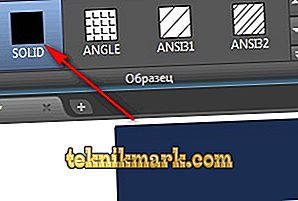This tool is used in many graphic editors and serves to impart color and illusory volume to objects, figures, drawings, drawings, etc. The fill in AutoCAD is carried out through the Drawing panel through the creation of color shading or through the use of Gradient.

In AutoCAD, you can create a fill in several ways.
Hatch
Creating a hatch requires that the object being filled be placed in a closed loop. This method is as simple as it needs to do the following:
- open the “Hatching Editing” section;
- expand the “Hatch Patterns Palette” window by clicking on the selected structure;
- select the third tab “Other standards” and mark the first sample “Solid”;

- next, click “OK” and expand the “Color” section;
- select the color you want to apply to the shape from the list, or open and add any shade from the color picker.
Gradient
This is the best choice for “coloring” a shape, an object, an area, because using a two-color gradient, the color transition is smoother, which allows you to carry out color reproduction as close as possible to the original. On the drawing panel, select "Gradient" and click on the object, then press "Enter".

When the gradient automatically fills the area to edit the layer, open the “Properties” section.

Here you can change the color, tilt level and transparency and scale.
Transparent fill
If we analyze the functionality of the program, there is no separate option for transparent shading as such. But when you add a stroke, there is a string with custom values called “Hatch Transparency”, with which you can achieve the desired result and make the fill transparent. If you click on the “Sample” section, you will be provided with many options for gradients and patterns, which will help to make the drawing color rendition even better.
Useful commands and variables
- "GFCLRSTATE" - set the number of colors;
- "GFANG" - to select the angle of the gradient fill in the range from 0 to 360 degrees;
- "GFCLR1" and "GFCLR2" - allow you to select colors in a one-color or two-color gradient;
- "GFCLRLUM" - select the level of tone or hue;
- “HPBACKGROUNDCOLOR” - background color management;
- “HPCOLOR” is the default shade.
As you can see from all of the above, the question of how to make a fill in AutoCAD, the simplest, and for the study will take not much time.
All menu section titles refer directly to the latest software version, when working with older versions (2011/2013/2014, etc.), the names and appearance of the interface may differ slightly, but the application of the actions described in the article doesn’t will affect.

